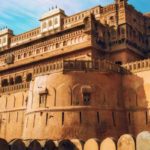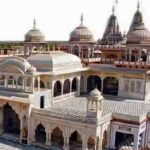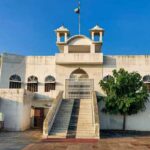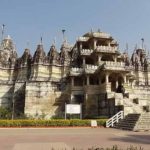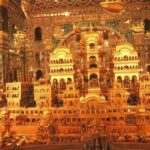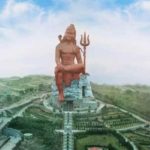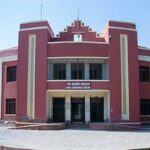Bhandasar Jain Temple is a prominent religious site located in Bikaner, a city in the northwestern state of Rajasthan, India. It is one of the oldest and most revered Jain temples in the region.
The temple is dedicated to Lord Sumatinath, the fifth Tirthankara of Jainism. It was constructed in the 15th century by a wealthy Jain merchant named Bhandasa Oswal, hence its name “Bhandasar Jain Temple.” The temple is renowned for its exquisite architecture, intricate carvings, and vibrant artwork.
The Bhandasar Jain Temple is a three-storied structure built using red sandstone and white marble. The entire temple is adorned with intricate carvings depicting scenes from Jain mythology, including celestial beings, Tirthankaras, and various Jain symbols. The carvings exhibit remarkable attention to detail and craftsmanship.
One of the unique aspects of the temple is its use of lacquer work. The inner walls of the temple are covered with a layer of lacquer, which adds a beautiful shine and enhances the vibrancy of the paintings and carvings. This technique is a distinguishing feature of the Bhandasar Jain Temple and sets it apart from other Jain temples in the region.
The temple also houses a sanctum sanctorum where the idol of Lord Sumatinath is placed. Devotees and visitors offer prayers and perform rituals in this sacred space. The serene and peaceful atmosphere of the temple makes it a popular destination for spiritual seekers and tourists alike Religious Places in Rajasthan.
Apart from its religious significance, the Bhandasar Jain Temple also serves as a center for cultural activities and religious festivals. The temple hosts various events and celebrations during Jain festivals, attracting devotees from different parts of the country.
Overall, the Bhandasar Jain Temple in Bikaner is not only a place of worship but also a symbol of architectural brilliance and cultural heritage. Its splendid artwork, unique lacquer work, and devotion to Jain principles make it a must-visit destination for those interested in exploring the rich Jain heritage of Rajasthan.
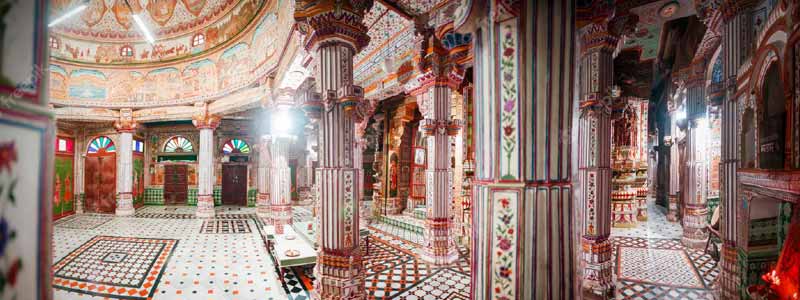
History of Bhandasar Jain Temple
The Bhandasar Jain Temple in Bikaner has an intriguing history that dates back several centuries. It was built in the 15th century by a prosperous Jain merchant named Bhandasa Oswal, also known as Seth Bhandasa, who belonged to the Oswal Jain community Rajasthan Pilgrimage Tour.
Legend has it that Seth Bhandasa had a divine vision that inspired him to construct a temple dedicated to Lord Sumatinath, the fifth Tirthankara of Jainism. The vision emphasized the importance of performing a charitable act during a period of drought. Inspired by this vision, Seth Bhandasa decided to use his wealth to construct the Bhandasar Jain Temple and use ghee (clarified butter) instead of mortar in the construction process.
During that time, Bikaner was experiencing severe water scarcity due to a prolonged drought. Seth Bhandasa’s idea of using ghee in the construction served two purposes. Firstly, it would utilize a significant amount of ghee that was lying unused in his warehouses. Secondly, the ghee would mix with the sand and act as a coolant, thus helping to combat the water scarcity issue in the region Rajasthan Budget Tours.
The construction of the Bhandasar Jain Temple began in 1468 AD and took several years to complete. The temple was constructed using red sandstone and white marble. Skilled artisans and craftsmen were employed to create intricate carvings and paintings, adorning the temple’s walls and ceilings.
The architecture of the temple is a blend of Rajputana and Gujarati styles, featuring beautifully carved pillars, domes, and intricate designs. The walls of the temple are covered with exquisite frescoes that depict scenes from Jain mythology, the lives of Tirthankaras, and various celestial beings. These intricate artworks are a testament to the exceptional skills of the craftsmen of that era.
Over the years, the Bhandasar Jain Temple has undergone renovations and restorations to preserve its architectural beauty and religious significance. Today, it stands as a cherished spiritual and cultural landmark in Bikaner, attracting devotees, tourists, and history enthusiasts from around the world.
The temple continues to be an active center for Jain worship and hosts various religious festivals and events throughout the year. It stands as a symbol of the rich Jain heritage and architectural marvels of Rajasthan, serving as a testament to the religious devotion and philanthropy of Seth Bhandasa and the Jain community.
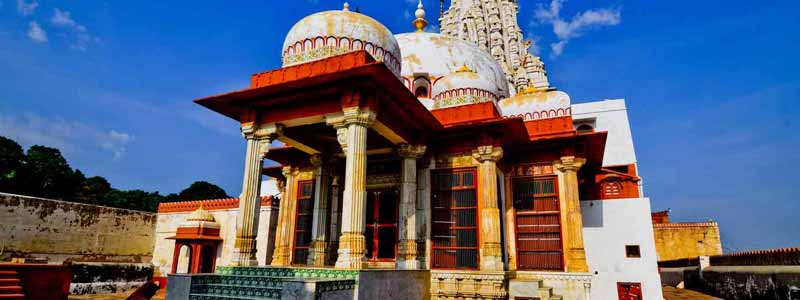
Best Time to Visit Bhandasar Jain Temple
The best time to visit the Bhandasar Jain Temple in Bikaner is during the winter season, which spans from October to March. The weather during this time is pleasant and ideal for exploring the city and its attractions.
Here are a few reasons why the winter season is considered the best time to visit Bikaner and the Bhandasar Jain Temple:
Weather: Bikaner experiences extreme temperatures during the summer months, with temperatures soaring above 40 degrees Celsius (104 degrees Fahrenheit). The winter season offers relief from the scorching heat, with temperatures ranging from 10 to 25 degrees Celsius (50 to 77 degrees Fahrenheit). The pleasant weather allows visitors to explore the temple comfortably without being affected by the heat.
Festivals: Bikaner celebrates several festivals during the winter season, making it an excellent time to witness the vibrant cultural traditions of the region. The Bhandasar Jain Temple also hosts various events and festivities during this time. One of the significant festivals celebrated in Bikaner is the Camel Festival, held in January, which includes camel races, cultural performances, and traditional music.
Accessibility: The winter season is when tourism in Bikaner is at its peak. Consequently, transportation services, accommodations, and other facilities are readily available and accessible. You can enjoy your visit without the inconvenience of overcrowding or limited services.
Photography Opportunities: The pleasant weather and clear skies during the winter season provide excellent opportunities for photography enthusiasts. The temple’s intricate architecture, vibrant frescoes, and carvings can be captured beautifully in the soft winter light.
It’s important to note that the Bhandasar Jain Temple is open throughout the year, allowing visitors to explore and pay their respects. However, considering the weather conditions and overall experience, the winter season is generally recommended as the best time to visit the temple and enjoy the surrounding attractions in Bikaner.
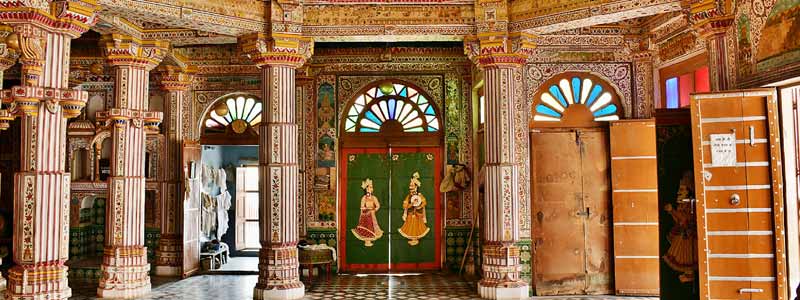
How to Reach Bhandasar Jain Temple
To reach the Bhandasar Jain Temple in Bikaner, you have various transportation options available. Bikaner is well-connected by road, rail, and air.
By Air: The nearest airport to Bikaner is Nal Airport, located approximately 15 kilometers away. It operates domestic flights from major cities in India. From the airport, you can hire a taxi or take a pre-paid taxi to reach the Bhandasar Jain Temple.
By Train: Bikaner Junction is the main railway station in Bikaner, well-connected to major cities in India. Numerous trains run to and from Bikaner on a regular basis. Once you reach the railway station, you can hire a taxi or an auto-rickshaw to reach the Bhandasar Jain Temple. It is located around 2 kilometers from the railway station.
By Road: Bikaner has a well-developed road network, and buses, taxis, and private vehicles are available for reaching the city. You can either drive to Bikaner or take a bus from nearby cities like Jaipur, Jodhpur, or Delhi. The temple is located in the heart of the city, and once you reach Bikaner, you can hire a taxi, auto-rickshaw, or cycle rickshaw to reach the Bhandasar Jain Temple.
Local Transportation: Bikaner has an efficient local transportation system, including auto-rickshaws and cycle rickshaws, which are convenient for traveling within the city. You can hire these modes of transport to reach the Bhandasar Jain Temple from your accommodation or any other location in Bikaner.
It’s advisable to check the timings and availability of transportation options in advance, especially if you’re traveling during peak tourist seasons. Additionally, if you are unsure about directions, it’s always a good idea to ask locals or seek assistance from tourism information centers in Bikaner.

